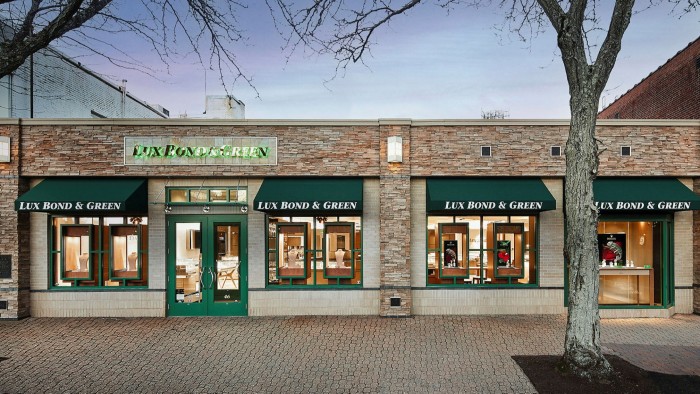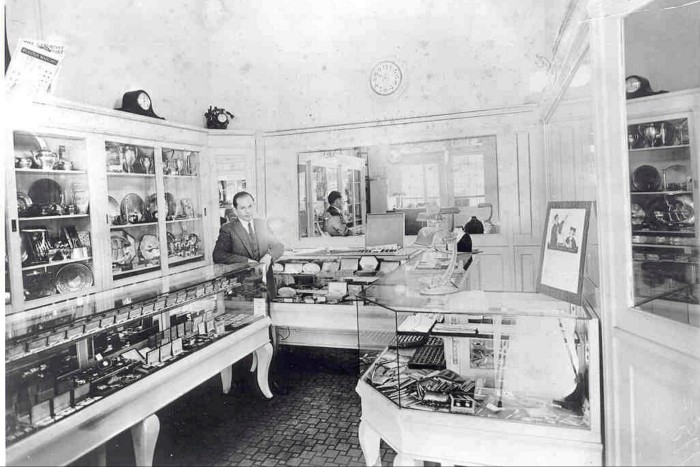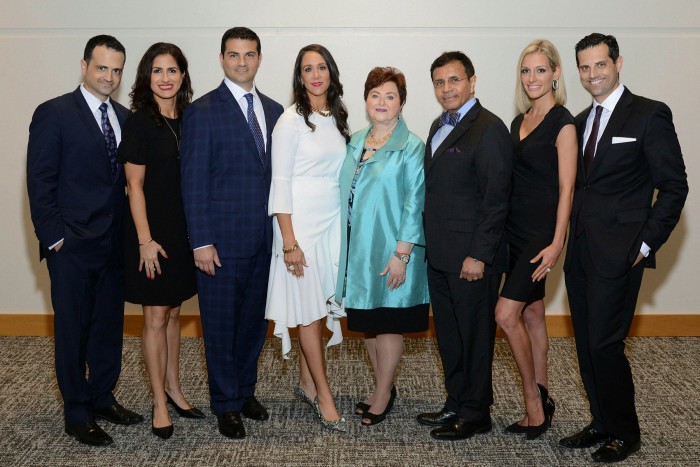Mom-and-pop jewellery shops promote personal touch in fight for survival

Roula Khalaf, Editor of the FT, selects her favourite stories in this weekly newsletter.
When Morris Green began selling fine jewellery from a cart on the streets of Waterbury, Connecticut in 1898, little could he have imagined that more than 120 years later, his business would be one of the oldest family-owned jewellers in the US. Today, its five locations on the east coast are overseen by the fourth generation of Greens.
This thriving mom-and-pop enterprise is one of many competing with jewellery chains thousands of stores strong. Signet Jewelers ranked first in 2020 in National Jeweler magazine’s State of the Majors report on the top 50 $100m supersellers. It recorded jewellery and watch sales in 2019 of $5.6bn from 2,757 locations, according to the report. Retail giant Walmart placed second with $2.7bn in watch and jewellery sales from 7,632 outlets, while online leviathan Amazon, in fifth, posted sales of $1.6bn, up 21 per cent year on year.
John Green, Lux Bond & Green president and chief executive, explains the strengths of family-run retailers: “Great people are not a secret but the best ingredient to success. Also being part of the community is vital . . . as the networking opportunities are very important.”
The Lux Bond & Green family touch is one attraction for New Yorkers to drive the 100km to Hartford to buy jewellery costing between $20,000 and $2m. “Certainly Walmart had more people to help with their digital and online presence, but listening to our customers and having feedback from our stores and staff gives us an advantage,” says Green. “Shopping the way customers want to, with in-store, online, kerbside pick-up, by appointment both in-store and virtual, is an advantage of the family-owned businesses.”
A long-running family business on the State of the Majors list is Ben Bridge. This Seattle-based fine jeweller ranked 24th and generated $301m from watch and jewellery sales in 2019 from 95 sites.
“My great-uncle had a plaque that summed up our philosophy: ‘Service is the rent we pay for the space we occupy on earth.’ The level of true involvement and contribution comes from the community connection,” says Lisa Bridge, who is from the fifth generation of this family jeweller founded in 1912, and its first female president. Ben Bridge is now a Berkshire Hathaway subsidiary but is still run by the family.

“My father always said his greatest education came from going to lunch every day with his father,” adds Bridge. “So when I came to work in the business, I too had a daily lunch date and an education. For years, our offices shared a wall, and I smiled every time I heard his keys land on his desk in the morning.”
Zadok Jewelers in Houston was founded in 1976. Its transactions range from a couple of hundred dollars to the multimillions, according to partner Jonathan Zadok. “We are seventh-generation jewellers with two generations active in the family business — my parents and their three children,” he says. “We also have my two sisters-in-law working in the marketing department. It’s hard to attend a family dinner or an event outside of work without discussing business.”
But resources are often limited. “It’s getting harder to compete as an independent jeweller in the US,” says Zadok. “We don’t have economies of scale when it comes to some back-of-house and support staff, including marketing and buying teams.”

There are more day-to-day challenges. “You can’t all go on vacation at once. Someone is always left to mind the store,” says Lauren Kulchinsky Levison, curator of collections at Mayfair Rocks in The Hamptons, Long Island. “Weddings — I mean, we have to close.”
There are some advantages. “Big-box chain stores cannot duplicate the family atmosphere an independent jeweller has,” says Zadok. “They generally don’t know nearly as much about the product and have a constantly rotating staff.”
Families must also ensure its members are capable of making the business a success. “Communication and clear roles and responsibilities are critical,” says Andrew Mitchell-Namdar, head of marketing at Mitchells, another Connecticut clothing and jewellery business. “We have a family council and an outside adviser. Succession planning takes years to successfully orchestrate and starting early is important.
“We also have a strict policy about entering the family business: five years of outside experience, a college degree, an open ‘real’ position and reporting to someone other than a family member. A job here is not a family birthright.”
Even so, longevity is a concern for family businesses. Zadok has witnessed many closures. “Some do not have a succession plan, or they get pushed out of their space because rent becomes unaffordable,” he says.
Sid Potts, owner of the eponymous jeweller in Shreveport, Louisiana, believes small retailers offer an enduring business model. “Not everyone wants to shop online. We are thankfully in an industry where people still want to touch and feel and see before they purchase,” he says.
Kulchinsky Levison, however, is betting on the next generation. “Years and years ago, the mom-and-pop jeweller survived on the Christmas season,” she says. “Now it is self-purchasing, and all luxury is competing with luxury.”
Comments